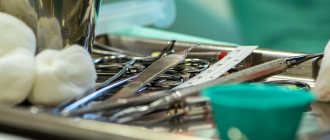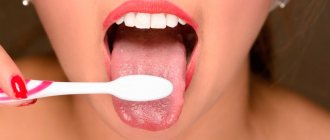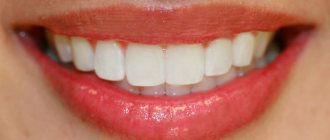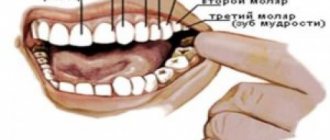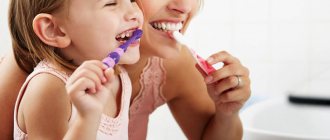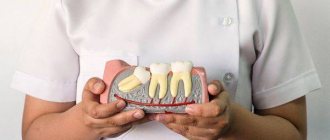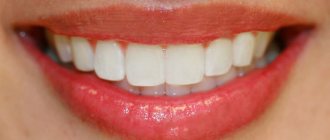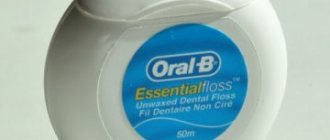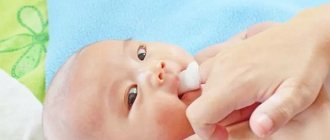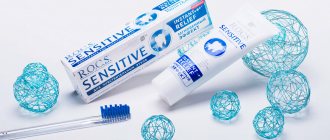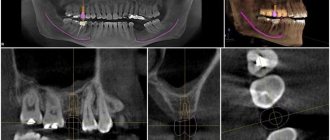Almost everyone knows about how dental hygiene affects the general condition of the body. And in fact, anyone can debate this topic.
But, nevertheless, the undeniable fact is that the general health of a person largely depends on the health of teeth and gums. This has been confirmed by various scientific medical studies. Inflammatory processes on the teeth and gums, as well as heavy plaque and other deposits lead to an increase in the number of pathogenic microbes that can provoke a large number of diseases. Heart and vascular diseases, the development of diabetes, complications during pregnancy and premature birth - these and other health problems can arise due to small microbes on the teeth.
As medical dental practice shows, caries, gingivitis and tartar almost always occur due to improper oral hygiene. Having heard the phrase “you are brushing your teeth incorrectly” from a dentist, most patients are very surprised and begin to give other reasons for the development of their diseases, be it heredity, sensitive enamel or crowded teeth.
What is the right and wrong way to care for your teeth?
There are research results that clearly show that 99%
Problems of teeth and gums arise from improper care.
And there is data that shows the opposite picture, as in Switzerland, where regular oral hygiene is instilled almost from infancy. Only 3% of the population suffers from caries. Children are taught to brush their teeth correctly at an early age, special lessons are given at school, and they need to visit the dentist every six months.
As they say, feel the difference.
The formula for dental health looks like this:
proper home care + regular visits to the dentist = healthy teeth and gums
According to statistics, in Russia only 30% of the population brushes their teeth correctly; the rest, alas, do not do this for various reasons. Most often this is due to the inability to brush your teeth properly and a lax attitude towards your health.
Why is it necessary to brush your teeth?
Taking good care of your teeth and mouth is important not only because it keeps your teeth white and your breath fresh. A so-called bacterial film is constantly formed on the teeth, mucous membranes, and tongue. This is a complex structure consisting of an intercellular matrix, components of oral fluid, various bacteria and their metabolic products. The oral cavity is a very favorable environment for the growth of bacteria. Microorganisms contained in the bacterial film, during their life processes, release substances that destroy enamel and cause inflammation of the gums. Over time, hard tissues are destroyed and carious cavities form.
“A bacterial film, or biofilm, in dentistry is a set of microorganisms that are firmly attached to each other and at the same time quite tightly attached to the teeth and mucous membrane. Actinomycetes, fungi, spirochetes, and fusobacteria that live in large numbers are called “periodontopathogenic” and “cariogenic”: modern studies have shown their leading role in the development of periodontal inflammation and dental caries.”
“Biofilm structure on natural teeth” Dr. med. Vincent Zijnge [4]
Oral health is of great importance for the health of the entire body, including the immune and digestive systems. An example of such a relationship is the condition of the teeth and the process of chewing food. If the teeth do not fully perform their functions, the food is not crushed as it should be (for example, because it is painful or uncomfortable for a person to chew), then a poorly processed food bolus ends up in the stomach. It lingers longer, is digested less well and can later cause discomfort and disruption of intestinal function. Thus, knowing how to properly care for your teeth is important for the normal functioning of the entire body.
When to urgently visit the dentist
- If there is a piece of filling accidentally in the mouth;
- During the brushing process, the toothpaste turns red;
- When brushing your teeth, discomfort appears;
- A intact and healthy-looking tooth begins to loosen or its neck is exposed;
- Cracks, stains or deposits are visible on the tooth;
- Sores appeared on the tongue and cheeks;
- The filling injures the tissues of the oral cavity;
- Seizures appeared in the corners of the mouth.
If the dental examination is purely preventive, it means that the health of your teeth is impeccable.
How often should you brush your teeth?
It is believed that you need to brush your teeth at least twice a day. There is a very practical justification for this. Brushing in the morning removes bacteria that have accumulated in the mouth overnight. Cleaning in the evening before bed helps remove bacterial plaque that has accumulated during the day and inhibits the formation of biofilm at night.
Another widely known tip is to brush your teeth for at least 2 minutes. One jaw consists of three conventional parts: chewing teeth on the right and left, and the front part. It is necessary to pay sufficient attention to each department.
Proper dental care -
Unfortunately, all people understand the term “good oral hygiene” differently, believing that everything is fine with their hygiene, and that all dental problems are to blame (hereinafter on the list) - water, bad heredity, pregnancy, etc. . Below we have described in detail for you how often and how to brush your teeth correctly, as well as what hygiene products are best to use.
How many times a day should you brush your teeth?
Most people know that they need to brush their teeth twice a day. Everything is correct, but this is only the minimum value. Normally, teeth are brushed after every meal, i.e. 3 times a day. If you are afraid that your colleagues at work will call you a cleaner if they see you brushing your teeth in the toilet during your lunch break, then you need to make a choice - between clean teeth, the absence of caries and bad breath, and the respect of dirty-toothed colleagues.
If a toothbrush and paste at work are unacceptable to you, then the minimum amount of hygiene that will allow you to remain Homo sapiens is dental floss + chewing gum. The most important thing in this combination is the use of dental floss, because... food gets stuck between the teeth (and we are not talking about stuck pieces of meat, but about soft food residues, which cause much more damage to the teeth, because they consist of quickly digestible carbohydrates and therefore are most quickly processed by bacteria into acid).
Diet – effective prevention of dental caries is impossible without following a diet. For example, it is very good if you brush your teeth 3 times a day after each main meal. But, if you decide to eat chocolate, cookies, sweets, nuts between main meals... the carbohydrates stick to your teeth again and bacteria immediately begin to convert them into acid. Therefore, all snacks should be eaten at the end of the main meal, and after that, immediately brush your teeth.
It is the wrong diet and frequent snacking on cookies and other carbohydrates that are the root cause of caries in children (this also applies to sugary drinks - juices, soda, liquid mixtures). Children often develop so-called bottle caries, which affects almost all teeth (when parents, to prevent the child from crying, give him a bottle of formula for the whole night or day). And without solving the problem with diet, no prevention of caries in children is simply possible.
If you are asking yourself how to get rid of caries at home, then following the recommendations of this article can almost completely save you from the appearance of new foci of caries. It's up to your willpower and motivation, because sometimes you are too lazy to get up and go straight away to brush your teeth, or finally start regularly using dental floss after every meal.
Proper hygiene scheme -
After each meal, you need to follow the following sequence: 1) flossing, 2) brushing with a toothbrush and toothpaste. If you don’t have toothpaste and a brush, you should always have dental floss and chewing gum with you. Floss will remove food debris, and chewing gum works by stimulating salivation (saliva has a certain buffering capacity that neutralizes acids in the mouth).
It is very important not only how to brush your teeth, but also when to do it. In the morning, it is best to brush your teeth after breakfast (for people with a lot of plaque and carious teeth, this can be unpleasant, so it is recommended for such patients to brush their teeth both before and after breakfast). As for all other oral hygiene sessions, teeth should be brushed within the first 5 minutes after eating.
Using dental floss –
Let's be honest - without dental floss there can be no talk of good hygiene. What do you think: why is the most common location of caries in the interdental spaces? Precisely because food debris gets stuck there, which cannot be removed by any fancy toothbrush models or even irrigators. If the instructions for a brush or an advertisement tell you that it perfectly cleans the spaces between teeth, this is all untrue and is only a publicity stunt. And this equally applies to electric, ultrasonic, and other models of brushes and attachments for them.
It is very important that you understand the following - you should use dental floss not only when you feel that a piece of meat is stuck in your teeth. After eating, so much soft sticky food debris accumulates in the interdental spaces that will not cause you any concern, but it is they (and not pieces of meat) that are the root cause of caries, because... Such food residues consist predominantly of carbohydrates that are easily digestible by bacteria.
Dental floss should be used after every meal, cleaning absolutely all dental spaces. This usually takes about 1 minute, but at the beginning (while you learn to use it) it may take longer. The thread should always be in your pocket or purse. You can use it at a party, in the restroom of a restaurant, or even just on the street. Everything will depend only on your desire to have clean teeth and a pleasant breath.
How to use dental floss correctly: video
→ Types of dental floss, and which one is better
If there are bridges on the teeth, braces -
In the presence of braces and bridges in the oral cavity, conditions are created for the retention of food debris. In the presence of bridges, food is stuffed, as a rule, under the intermediate part of the bridge, which imitates the missing tooth. Therefore, for good hygiene, an ordinary toothbrush and paste, as well as dental floss, will no longer be enough in this case (24stoma.ru).
Special devices called irrigators are designed for these purposes. Such devices deliver under pressure a thin pulsating stream of water, saturated with air microbubbles, with the help of which food debris and microbial plaque are washed away (Fig. 6). Irrigators are also indicated for patients with chronic gum inflammation, because... They also allow you to wash periodontal pockets using special nozzles.
Important: any caries you develop, even a single one, is an indicator that there are defects in your hygiene. You must understand that there is no norm for the formation of a certain number of caries lesions per year. Normally, there should be no caries at all, and if it appears, then this is a question of how correctly you brush your teeth, how regularly, whether you are familiar with dental floss, and also how correct your diet is.
When caries develops, microbial plaque and food debris remain at the edge of the corner. Adequate oral hygiene allows complete removal of both. Predisposing factors, of course, also exist. For example, a low concentration of lysozyme in saliva (this is an enzyme that inhibits the growth of plaque) is of a genetic nature, but this factor is only secondary for the development of caries.
Or the buffering capacity of saliva is too low, which does not effectively neutralize acid in the mouth. This usually occurs in patients who consume too many carbohydrates. In patients with a balanced and protein diet, the buffer capacity of saliva is always normal. Those. here again questions about your diet. Often drinking wine or fruit juices (acid), sweet soda (carbohydrates) - all this also leads to demineralization of teeth and increases the risk of caries.
Why do you need toothpaste and floss?
What hygiene supplies are needed to properly care for your oral cavity? First of all, a toothbrush. It must be individual, corresponding to the condition of the teeth and gums. It is better to select it with a dentist, since toothbrushes differ in the softness and structure of the bristles.
Toothpaste is the second important element of care because it:
- cleanses;
- protects against caries;
- whitens;
- polishes;
- freshens breath;
- covers teeth with a protective layer, etc.
It is also better to choose it with a dental hygienist. But in general, if there are no problems, then fluoride toothpaste is used to prevent dental diseases and maintain healthy teeth and gums.
The third component is floss for cleaning interdental spaces. Unfortunately, in Russia the habit of using dental floss is not so widespread, although in the United States most adults follow the recommendations for the use of floss.
Don't forget to use a mouth rinse to remove food debris from areas of your mouth that are hard to reach with a toothbrush and leave your breath fresh.
Use dental floss
Using dental floss (called floss), you can clean the spaces between your teeth.
But wooden toothpicks can only be used in “emergency cases” when there are no other ways to care for your teeth: at work, in a cafe, on the street. The point is not that it is difficult to thoroughly clean the spaces between teeth with their help; they can leave “splinters” and damage the soft tissue of the gums.
The floss cleans the spaces between the teeth more accurately, while also acting more effectively. If you don’t have a special thread at hand, you can get by with a regular one - about 45 centimeters of strong thread is enough, which can be wound around your finger. But it is better to use special dental floss to clean your teeth.
What affects the health and color of teeth [2,3]
Sometimes, despite careful oral care, teeth do not have the desired snow-white “Hollywood” shade. Most often, the reason for this is the natural color of the enamel and/or dentin: there are many people whose teeth are yellowish or grayish from birth. In this case, persistent bleaching using chemical or abrasive agents is fraught with increased sensitivity of dentin.
Color can also depend on the food you eat and bad habits. Tea, coffee, jam, natural juices, tobacco affect the shade of enamel, and smoking and alcohol abuse worsen its condition.
Another factor is eating habits. Lovers of sweets and foods rich in carbohydrates (baked goods, pasta, etc.) are at increased risk of caries, since sugar is the favorite food of bacteria that cause the development of caries.
The habit of eating soft pureed food has a bad effect on the natural cleansing of the oral cavity. That is why, from childhood, everyone is recommended to chew fairly hard vegetables and fruits: carrots, apples, celery, cucumber, kohlrabi. During chewing, natural cleansing of the surface of the teeth, cheeks, gums and tongue occurs.
When should you start taking care of your dental health?
The correct start of this process should be carried out at the stage of pregnancy. The expectant mother often wants foods that are not the healthiest, but the formation of the unborn baby’s teeth occurs in the first months of pregnancy. Lack of protein in her diet can lead to the child having many dental problems.
The condition of teeth is affected by diseases, medications, and living conditions. For example, if the content of fluoride salts in the water is low, the teeth become gray and the neck of the tooth is damaged. Teeth brushing skills should be instilled in a child from childhood, setting a personal example. Already at two years old, a child can be given a toothbrush.
Care consists of two main components:
- hygienic daily activities at home;
- regular visits to the dentist.
How to choose the right toothbrush and toothpaste [2,3]
A high-quality toothbrush will not injure enamel and gums when using the correct teeth brushing technique. Toothpaste with fluoride has a preventive effect, protecting teeth from caries, while antibacterial paste fights germs that cause inflammation and bleeding gums. Dental floss, mouthwash, and other hygiene products provide additional oral health benefits.
With what and how should you properly care for your oral cavity?
| State | Recommendations for choosing a toothbrush and care products |
| Healthy teeth and gums | Soft bristle toothbrush Fluoride toothpaste Dental floss or tape Refreshing Mouthwash with Fluoride |
| Teeth with a "chalk stain", the initial stage of caries | Soft bristle toothbrush Remineralizing toothpaste with increased fluoride content Dental floss or tape Antibacterial Fluoride Mouth Rinse |
| In the presence of fluorosis (excess fluoride) | Soft bristle toothbrush Fluoride-free toothpaste Dental floss or tape Mouthwash without fluoride |
| For periodontal diseases | Toothbrush with soft or ultra-soft bristles Toothpaste with antibacterial and anti-inflammatory effects Dental floss or tape Antibacterial mouth rinse |
| If you have braces | Medium hardness orthodontic toothbrush Toothpaste with fluoride against caries Interdental products: yoshiki, single-beam toothbrushes, floss Irrigator Antibacterial Fluoride Mouth Rinse |
| If you have implants | If there are no dental diseases, then caring for implanted teeth is the same as for healthy natural teeth |
| If you have removable dentures | Traditional dental care products are supplemented with those specialized for removable dentures, for example, a double-sided hard toothbrush |
| For increased sensitivity | Toothbrush with soft or ultra-soft bristles Special toothpaste for sensitive teeth, for example with arginine and calcium carbonate complex Dental floss or tape Mouthwash for sensitive teeth |
Choosing a toothbrush
The modern selection of brushes is simply huge. To avoid mistakes, you need to follow simple rules:
- soft fibers are suitable only for sensitive enamel and for children; for an adult, such a brush will not allow for high-quality cleaning of the surface of the teeth;
- Too hard bristles can damage tooth enamel;
- do not use brushes made of natural fibers - it is unhygienic;
- give preference to fibers with rounded ends to reduce the risk of injury to the enamel and perform a high-quality gum massage;
- To massage the gums, fibers need soft, elongated fibers on the outside;
- for densely spaced teeth that are most susceptible to caries, it is better to purchase a brush with fibers of different lengths; electric options with high-speed rotation are suitable;
- a universal option is sonic brushes, which can clean surfaces in the most inaccessible areas;
- When brushing your teeth, do not forget to brush the surface of your tongue;
- change your toothbrush regularly - at least once a quarter;
How to eat immediately after getting braces
In the first 1-2 weeks after installing braces (as well as after their activation), especially with a significant defect and the choice of ligature structures (they put more pressure on the teeth than self-ligating ones), you will experience pain. The degree of intensity is completely different and depends on many factors, including your sensitivity. Therefore, if at first you find it painful and unpleasant to eat your usual food, change it to a more liquid one - give preference to soups, dairy products, yoghurts, or puree the main dishes. This will reduce the load on the teeth and reduce painful manifestations.
What diet should you follow?
There are three main rules that must be followed after installing braces:
- avoidance of excessively hard and “sticky” foods – nuts, seeds, toffees, chewing gums,
- hard fruits and vegetables, meat must be cut into small pieces, chewing with side teeth,
- food and drinks should be warm, but not hot - this can lead to the records coming off.
Your diet should remain unchanged, with the exception of the three points listed. Do not overuse liquid and soft foods - your teeth must receive stress for normal functioning. You can minimize the consumption of viscous foods (chocolate, waffles, chips) - but not because they are prohibited, but because they accumulate on braces and under the archwire. They will simply be very difficult to remove.
Irrigator for dental hygiene
An irrigator is considered an indispensable device for pronounced interdental spaces, wearing braces or the presence of periodontitis. The principle of its operation is based on the supply of a water jet under pressure, which removes food debris between the teeth. Using an irrigator, you can clean bacterial plaque, remove dirt, and massage your gums. It is permissible to use not only water as a washing liquid, but also special agents that have a therapeutic or preventive effect.
The purpose of using the device can be:
- prevention of caries formation due to high-quality cleaning of interdental spaces;
- prevention of gum disease (the massage effect improves blood flow in soft tissues, eliminates bleeding, accelerates gum regeneration when damaged);
- maintaining cleanliness of dental structures.
The device is used according to the manufacturer's instructions. Almost all models have several cleaning modes, which are selected according to the user’s needs. Thus, the mono-jet mode provides a continuous flow of jets, the pulsating mode supplies jets at short intervals (pulsation), and the micro-bubble mode creates millions of microscopic bubbles that effectively cleanse microbial plaque.
How to reduce the risk of developing caries and not give up sweets
If your child has a sweet tooth or you are simply not ready to limit him, offer him an alternative - lollipops and candies with xylitol.
Xylitol or xylitol is found in the fibers of fruits, vegetables, birch bark and even mushrooms and is not a breeding ground for bacteria. When xylitol is added instead of sugar, it stops the growth and development of caries, since it is not absorbed by cariogenic bacteria, and they die.
Products containing xylitol can be consumed at any age. For children, 2-3 pieces of 100% xylitol chewing gum per day are enough to significantly reduce the risk of plaque and tooth decay.
In addition, chewing gum with xylitol will be useful for children who do not have the habit of actively chewing vegetables or meat. Chewing gum is useful as an additional exercise machine.
Lollipop Miradent XyliPOP (blueberry), 5 pcs.
Lollipops miradent Xylitol Drops mint
Chewing gum Miradent Xylitol For Kids strawberry
What is not recommended to do at home?
Often people try to save money and resort to traditional methods, in particular using soda or tooth powder to clean their teeth. Of course, the application gives some results, but it does not replace professional hygiene and it is impossible to remove plaque in hard-to-reach places with soda.
Other negative aspects of DIY whitening include:
- formation of microtraumas on the gums;
- violation of the integrity of the enamel, since aggressive compounds corrode and make it fragile, over time it becomes thinner;
- allergic reactions on the skin near the mouth are possible.
Damaged enamel increases tooth sensitivity, which greatly accelerates and causes the development of caries, and can even lead to the loss of a dental unit.
Teeth whitening using professional gels is another procedure that many try to perform at home, considering it absolutely safe. The procedure is truly harmless, provided that it is carried out under the guidance of an experienced specialist. By carrying out whitening without first consulting a dentist, you risk your health. Even in a clinical setting, not all procedures may be useful to you, and only a doctor, having fully examined the condition of the oral cavity, will choose the best option for you.
Contraindications to teeth whitening are:
- inflammatory processes in the gums;
- periodontitis;
- worn away tooth enamel.
Before whitening, treatment of the gums and teeth is always carried out, and only after that it is possible to begin to improve their aesthetic appearance.
Only a doctor can choose the appropriate method and the right preparation for whitening. When carrying out the procedure, it is necessary to take into account many factors, which cannot be done without special knowledge. Therefore, dentists advise not to experiment with your health, but to turn to professionals.
What to do if the bracket comes off?
This happens quite rarely. And, as a rule, with budget models that are initially poorly fixed, or after some time after using the system. In such a situation, you need to make an appointment with the orthodontist as quickly as possible, or even come without an appointment during his working hours: gluing the plate will only take a few minutes. Metal braces can be re-glued at least 2-3 times. Ceramic or sapphire - also 1-2 times, but you need to look at their general condition.
It is unlikely that the bracket will be swallowed, since even if it comes off the surface, it will still be fixed to the arch with the help of ligatures or locking fastenings. If the plate does fall off, do not throw it away, but be sure to take it with you to your doctor’s appointment.
Elastic bands for braces (traction)
Elastic bands for braces or traction are elastic rings that create additional load and reliably fix the arches to the braces, speeding up treatment.
There are several types of traction.
- Elastic
- rings that are put on braces installed on both the upper and lower teeth. The patient can change them himself. - Ligature rings
are small in diameter rings that are installed on each bracket to combine the plates with the arch into a single structure. - Chain rings
- they are connected alternately to form a chain. They are placed to eliminate wide interdental spaces.
Eat healthy foods
“We are what we eat,” this proverb is true not only for dietetics, but also for dentistry. After all, tooth tissue is formed from the microelements that we consume in food. If you eat only “refined food,” then very soon the thickness and strength of the enamel will decrease, and soon the teeth will begin to decay.
One of the foods that are good for teeth is cheese. Just 5-10 grams of cheese, which you eat during a meal, will eliminate the acidic product of plaque, having an alkaline reaction. Edam, Gouda, Morbier, and Emmental cheese have the most calcium, which is also known to be very good for bones and teeth.
If you can't imagine life without sweets, choose chocolate. Preferably bitter. Solid chocolate will be less harmful to your smile than caramel or toffee. Chocolate is easy to wash off, while iris is very difficult to even clean with a toothbrush.
Another useful product for dental health is cocoa. The fact is that this overseas product has a pronounced anti-inflammatory effect, which is important for the gums and tooth surface. Cocoa inhibits the activity of collagenase, a harmful enzyme.
Why do my teeth hurt after installing and activating braces?
In the first days after installation, and subsequently after activation of braces, aching sensations of varying degrees of intensity are possible - the stronger the defect, the greater the pain. When fixing ligature systems, the pressure is greater, so the teeth will hurt more. Soreness in general is a completely normal reaction, since braces from the first minutes after fixation already have an impact on the teeth and change their position.
If the pain is severe, then in the first days after installation or activation of the system, you can take painkillers. But no more than 2-3 days. If discomfort persists, contact your orthodontist for system correction.
What to do if your braces chafe?
For inflammation of the mucous membranes, you can use special gels and ointments that have an antiseptic and soothing effect - for example, Metrogyl Denta, Vinilin.
To prevent inflammation, it is also recommended to use orthodontic wax. The purpose of its use is to isolate and protect soft mucous membranes from solid elements of the system. Apply to sharp protruding parts and replace as they fall off. It is recommended to remove the wax while eating.
Silicone strips for braces, like wax, are used to protect soft mucous membranes. Silicone is presented in the form of strips that can be used to cover one bracket or the entire row. Unlike wax, it does not crumble and is used repeatedly.
